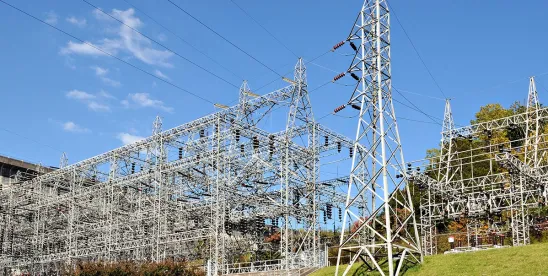There is a lot of buzz around clean technology, distributed energy resources (DERs), microgrids, and other technological innovations in the renewable energy and clean transport industries, and how these developments can contribute to solving longstanding environmental justice issues. As these innovations develop, energy markets will undergo substantial changes to which consumers and industry participants alike will need to adapt and leverage. Every other week, K&L Gates’ The Energizer will highlight emerging issues or stories relating to the use of DERs, energy storage, emerging technologies, hydrogen, and other innovations driving the energy industry forward.
FERC INITIATES RULEMAKING AIMED AT HELPING NEW ELECTRIC GENERATION FACILITIES CONNECT TO THE GRID
On 16 June 2022, the Federal Energy Regulatory Commission (FERC) issued a Notice of Proposed Rulemaking (NOPR) detailing potential improvements to existing interconnection procedures. The new procedures aim to address the significant backlog of requests to connect new electric generation facilities to the grid. FERC hopes that the new rule will expedite the current process, provide greater certainty, and prevent undue discrimination against new generation.
At the end of 2021, more than 1,400 gigawatts of generation and storage were waiting in interconnection queues throughout the country—more than triple the total volume at the end of 2016. Projects may wait for multiple years before they receive approval to connect to the electric grid, and the lag in review of interconnection requests will likely grow as the U.S.’s energy generation mix continues to evolve.
The proposed rule includes several key areas of reform intending to increase the efficiency of the interconnection process and minimize delays. Most significantly, FERC proposes to replace the first-come, first-served study process with a first-ready, first-served cluster study process.1
FERC ANNOUNCES TWO PROPOSED RULES AIMED AT IMPROVING POWER SYSTEM RESILIENCY AGAINST EXTREME WEATHER
On 16 June 2022, FERC announced that it initiated two rulemakings aimed at improving the reliability of the bulk power system against the threats of extreme weather. These two rulemakings stem from the Climate Change and Extreme Weather proceedings initiated by FERC in June 2021 in response to the growing number of extreme weather events that have resulted in load shed, blackouts, and electric system failure across the United States. Interested entities are invited to submit comments on the proposed rulemakings.
The first proposed rule would require the North American Electric Reliability Corporation to submit changes to Reliability Standard TPL-001-5.1 on transmission planning performance requirements to address extreme heat and cold weather events impacting grid reliability. FERC proposes that NERC’s changes to the reliability standard would include (i) development of benchmark planning cases derivative of historical weather information and future meteorological projections, (ii) expanded planning and analyses to cover extreme heat and cold events, including modeling the resource mix during these extreme weather conditions; and (iii) and corrective action plans.
The second proposed rule would direct transmission providers to submit one-time informational reports describing their policies and processes for conducting extreme weather vulnerability assessments and identifying mitigation strategies. These extreme weather vulnerability assessments are intended to improve FERC’s understanding of how transmission providers identify and mitigate risks to transmission assets and operations caused by extreme weather.
THE U.S. DEPARTMENT OF ENERGY AWARDS US$57.9 MILLION TO CLEAN ENERGY AND EMISSIONS REDUCTION PROJECTS TARGETING MANUFACTURING SECTOR
On 16 June 2022, the U.S. Department of Energy awarded US$57.9 million to thirty projects geared towards helping decarbonize the United States industrial sector and develop clean energy manufacturing technologies. The selected projects fall into three categories: manufacturing process innovation, advanced materials manufacturing, and energy systems.
Ten manufacturing process projects (awarded US$25.8 million) involve manufacturing innovation and are geared towards improving energy efficiency, reducing the carbon footprint of energy-intensive industries, reducing manufacturing costs, and improving material and product performance. Fourteen advanced materials manufacturing projects (awarded US$24.6 million) will focus on the development and production of advanced manufacturing materials with improved properties. And eight energy systems projects (awarded US$7.5 million) seek to develop lithium-ion battery manufacturing processes that enhance battery safety and reduce cost and time-to-market for battery products. These projects are funded through the Office of Energy Efficiency and Renewable Energy’s Advanced Manufacturing Office. The U.S. Government hopes that these awards will help it achieve its goal of net-zero carbon emissions by 2050.
David Wang also co-authored this article.
ENDNOTES
1 For more information about this NOPR, please see our client alert here: https://www.klgates.com/Unclogging-the-Interconnection-Queues-FERC-Proposes-Interconnection-Reform-6-17-2022.






 />i
/>i

